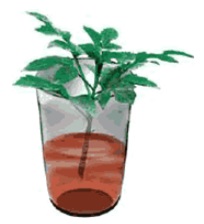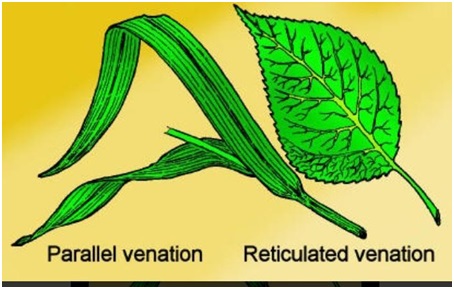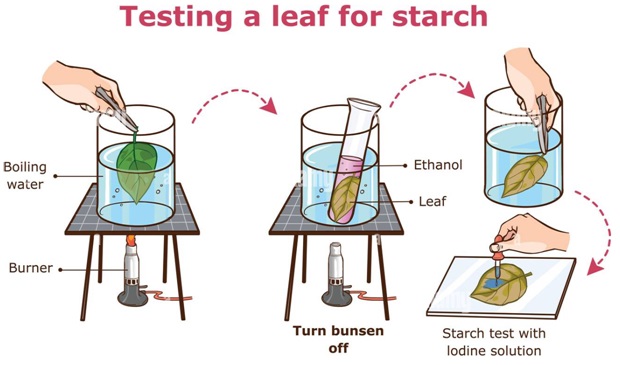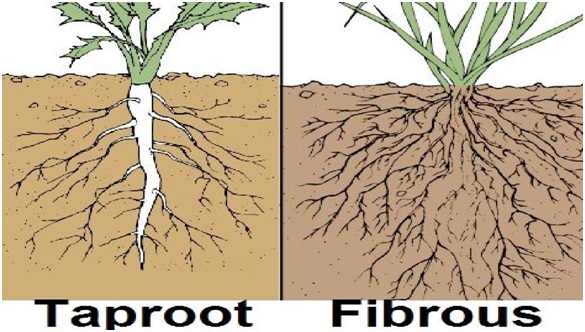Important Questions
Multiple Choice Questions:
Q.1 ________ is the part of the stem between two nodes.
(a) Node
(b) Midrib
(c) Internode
(d) Veins
Q. 2 The arrangement of leaves at a node is:
(a) Phyllotaxy
(b) Stamen
(c) Petals
(d) Sepals
Q. 3 The root absorbs water from the:
(a) Stem
(b) Soil
(c) Branches
(d) Flower
Q. 4 The outside the soil gives support to the branches of the
plants and trees due to which they do not break.
(a) Stem
(b) Soil
(c) Branches
(d) Roots
Q. 5 Name plants which have roots outside the soil.
(a) Sugarcane
(b) Money plant
(c) Banyan
(d) All of these
Q. 6 Which part of the plant joins leaf and root ?
(a) Branches
(b) Buds
(c) Flowers
(d) Stem
Q. 7 Those roots come out from the base of stem is:
(a) Taproot
(b) Fibrous roots
(c) Veins
(d) None of these
Q. 8 The branches of this root arise from a thick structure under the ground are:
(a) Taproot
(b) Fibrous roots
(c) Veins
(d) None of these
Q. 9 A process in which water comes out from the leaves in the form of vapour is:
(a) Photosynthesis
(b) Transpiration
(c) Venation
(d) Conduction
Q.10 In leaves the veins run parallel to each other in:
(a) Reticulate venation
(b) Parallel venation
(c) Both (a) and (b)
(d) None of these
Q.11 The leaf has a network of veins on both sides of the midrib in:
(a) Reticulate venation
(b) Parallel venation
(c) Both (a) and (b)
(d) None of these
Q.12 The swollen part of the pistil is:
(a) Ovules
(b) Petals
(c) Ovary
(d) Sepals
Q.13 Flowers that have stamens and no pistils are:
(a) Male flowers
(b) Female flowers
(c) Both (a) and (b)
(d) None of these
Q.14 Those flowers have both segments and pistils are:
(a) Bisexual
(b) Unisexual
(c) Stamen
(d) None of these
Q.15 Pollen grains are produced in:
(a) Stamen
(b) Anthers
(c) Pistil
(d) All of these
Very Short Question:
1. List few plants found around your house.
2. Are all the plants same in size?
3. What are the major parts of plants?
4. How many kinds of plants are there?
5. Name two plants that belong to herbs.
6. Give two examples of shrubs.
7. Give two examples of trees.
8. Define petiole.
9. What is lamina?
10. What are veins?
Short Questions:
1. What are weeds?
2. Classify plants and give an example of each.
3. What are herbs? Give two examples.
4. What are shrubs? Give two examples.
5. What are trees? Give two examples.
6. What are creepers? Write an example.
7. What are climbers?
8. Explain an activity to show that stem conducts water and other substances.
Long Questions:
1. What do you mean by leaf venation? Explain various types of leaf venation with example.
2. Explain the structure of a typical flower with the help of a diagram.
3. Explain an activity to test the presence of starch in a leaf.
4. Explain that sunlight is essential for photosynthesis.
5. Explain the important functions of root.
6. Explain various kinds of roots with the help of an example.
Answer Key-
Multiple Choice Answers:
1. (c) Internode
2. (a) Phyllotaxy
3. (b) Soil
4. (d) Roots
5. (d) All of these
6. (d) Stem
7. (b) Fibrous roots
8. (a) Taproot
9. (b) Transpiration
10. (b) Parallel venation
11. (a) Reticulate venation
12. (c) Ovary
13. (a) Male flowers
14. (a) Bisexual
15. (b) Anthers
Very Short Answers:
1. Answer: Mango, neem, grass, chilli, palak and banyan tree.
2. Answer: No, all plants are of different sizes.
3. Answer: Stem, root, leaves and flowers.
4. Answer: There are three kinds of plants:
(i) Herbs
(ii) Shrubs
(iii) Trees
5. Answer:
(i) Tomato
(ii) Potato
6. Answer:
(i) Lemon
(ii) Orange
7. Answer:
(i) Mango
(ii) Neem
8. Answer: The part (stalk) of a leaf by which it is attached to the stem is called petiole.
9. Answer: The broad green flat part of leaf is called lamina.
10. Answer: The lines on the leaf are called veins.
Short Answer:
1. Answer: The unwanted plants that grow in the fields with the main crops or in their surroundings are
called weeds. Weeds are the plants which are not grown by the farmers. For example, grass.
2. Answer: On the basis of various characteristics most of the plants can be classified into three categories:
(i) Herbs, e.g., tomato
(ii) Shrubs, e.g., lemon
(iii) Trees, e.g., mango
3. Answer: The plants with green and tender stems are called herbs. They are usually short and may
have no or less branches. For example, tomato, potato.
4. Answer: The plants which have a hard but not a very thick stem are called shrubs. Such plants have
the stem branching out near the base. For example, lemon, rose plants.
5. Answer: The plants which are very tall and have hard and thick brown stem are called trees.
The stems have branches in upper part and much above the ground. For example, mango, neem.
6. Answer: The plants with weak stem that cannot stand upright and spread on the ground are called creepers.
Various types of grasses are the examples of creepers.
7. Answer: The plants that take support of neighbouring structures and climb up are called climbers. They have weak stem.
For example, grapes, money plant, beans.
8. Answer: Take some water in a glass. Add few drops of red ink to the water. Cut the stem of a herb plant from its base.
Put it in the glass as shown in figure. We will see that some parts of the stem become red. This activity shows that
stem conducts water.

Long Answer:
1. Answer: Leaf venation: The design made by veins in a leaf is called leaf venation.
There are the following two types of leaf venation:
(i) Reticulate venation: If the design of veins makes a net-like structure on both the sides of midrib then it is
called reticulate venation. For example, mango leaf, gram leaf.
(ii) Parallel venation: If the veins are parallel to each other or to midrib then such type of venation is called
parallel venation. For example, wheat leaf, barley leaf.

2. Answer: A typical flower contains the following parts:
(i) Stalk: The part by which a flower is attached to the branch is called stalk.
(ii) Sepals: The small green leaf-like structures of the flower are called sepals,
(iii) Petals: The big coloured leaf-like structures are called petals. Different flowers have petals of different colours.
(iv) Stamen: It is the male part of the flower. It has two parts: (a) Filament and (b) Anther.
(v) Pistil: The innermost part of a flower is called pistil. It has three parts: (a) Stigma, (b) Style and (c) Ovary.
It is the female part of the flower.

3. Answer: Take a leaf in a test tube and pour spirit till it completely covers the leaf. Now put the test tube in a
beaker having water. Heat the beaker till all the green colour from the leaf comes out into the spirit in the test tube.
Take out the leaf and wash it with water. Put it on a plate and pour some iodine solution over it. The iodine solution
is brown in colour but when it comes in contact with starch it turns blue-black. The iodine solution will turn blue-black
when dropped on the leaf, this confirms the presence of starch in the leaf.

4. Answer: Take a potted plant having green leaves. Place it in a dark room for a day or two so that all the starch present
in leaves is used by the plant. Now cover a portion of leaf with black paper and keep the plant in the sun for a day.
Pluck the leaf, remove the black paper and test it for the starch. We see that only that part of the leaf becomes blue
-black which was open to sun. The covered part does not become blue-black. This shows that no starch is formed
because it gets no sunlight.
5. Answer: The following are the functions of root:
(i) They help to absorb water from the soil.
(ii) The roots help in holding the plants firmly in the soil.
(iii) They are said to anchor the plant to the soil.
6. Answer: There are following two types of roots:
(i) Tap roots: The roots which have one main root and other smaller lateral roots are called tap roots.
For example, mustard plant, gram.
(ii) Fibrous roots: The roots which have no main root but all the roots appear similar are called fibrous roots.
For example, maize, wheat.
